Gobble, Gobble! It’s Day Three of A Taste of Thanksgiving and we’re talking turkey.
Cooking a turkey can overwhelm even a well-seasoned cook. Most of us do it only occasionally and we seem to forget how to do it properly. I’ve cooked everything from a 3-Lb breast all the way up to a 34-Lb monster bird that looked like something made for Popeye!
Here are my tips for cooking the perfect turkey:
1. Selection
Start by selecting the right size. A generous estimate is 1-Lb per person which will accommodate leftovers. If you’re serving 10 people, buy a 10-Lb turkey and so on. If you don’t want a lot of food after the big day, estimate 1/2 Lb per person, which translates to a 5-Lb bird for 10 people. I always err on the side of caution and buy big, so unexpected guests can be fed without a problem. (In this way, I’m a typical Jewish Lady; Hungry Bear says I cook to feed an army!)
I’ve prepared probably 30 turkeys in my lifetime; only one was fresh. I have absolutely no issues with the taste/quality of frozen birds, provided they’re prepared correctly. As for brand, Butterball is truly the Cadillac of turkey, but they do cost more. Some cooks swear by Kosher and/or free range organic birds. Those are often triple the price and I haven’t found the taste justifies it.
2. Thawing
Frozen meat, especially big birds, will require a long time to defrost. I like the refrigerator method. Most guides offer an estimate of 5-Lbs per 24 hours. I have never found that to be accurate, especially if your fridge is on the cold side. If you’re cooking a bird over 20-Lbs, it may take an entire week. Don’t worry if your turkey is still slightly frozen on the big day. Soaking it in cold water for 2-3 hours should do the trick.
3. Cleaning
When the turkey is sufficiently frozen, you will have the pleasure—misery!—of cleaning it. Honestly, this is my least favorite part. I always wear disposable gloves to make the process less revolting. I wash the bird inside and out with cold water, remove the neck and giblets, then scrape out the entire cavity with a serrated grapefruit spoon, after which I spray it down for a final time. These steps do require extra effort, but it’s so worth it! A turkey that isn’t washed/scraped can have an off flavor, especially when stuffed. Don’t skimp on cleaning for the ideal results.
As for the to-stuff-or-not-to-stuff debate, it’s entirely up to you. Growing up, we always stuffed the turkey. Now, I usually don’t, because it takes so much longer. If you do stuff the turkey, add 1-2 hours to the overall cooking time. If no stuffing is used, add some raw veggies to the cavity instead. I used a mix of carrot, celery, and onion.
4. Cooking
A roasting pan is ideal for cooking a turkey. It doesn’t have to be fancy, but it does need to be sturdy. If a disposable pan is used, put a baking sheet under it for stability. (Trust me on this one; I had a turkey fall through the bottom once, splattering me and the kitchen floor with burning-hot juices!)
The biggest complaint about turkey is that it’s dry, so keeping the meat moist should be of primary importance. There are 3 methods I’ve used. All work, but some are better than others.
* Roasting the bird breast side down. This ensures juicer turkey, but you don’t get the crispy skin which is everyone’s favorite part. Also, it must be carved in the kitchen, or it looks messy.
* Covering the turkey with an oil-drenched cheesecloth. This is the old-fashioned method my grandmother taught me. I used this method exclusively until I discovered the next one.
* Roasting inside a Reynold’s cooking bag. My favorite method, hands down! The added expense is minimal and the results are phenomenal! This method also eliminates the need for basting.
The actual cooking time varies, but a good start is to roast 20 mins per pound in a 375-degree oven. Don’t rely strictly on a pop-up timer, but it’s an ok indicator. The only way to tell if it’s truly done is with an instant read thermometer. It will measure 165 degrees; check in the thigh. Dark meat takes longer than white and if you measure the breast, it’s faulty.
5. Carving
Allow the bird to rest for 30 minutes before carving is attempted. I have tried to skip this step and it’s always a mistake. The bird is too hot to handle and the juices need time to settle. Both you and the bird need to chill out!
When the 30 minutes are up, you can begin to carve. Some people swear by electric knives, but those scare me! I use a regular kitchen knife and I like to proceed in this order:
* Remove the wings
* Remove the drumsticks and thighs
* Remove the wishbone, then slice off each breast whole, after which the breast meat can be cut thin or thick, depending on preference. This way is so nice because each slice keeps a bit of skin intact.
When carving is completed, arrange all the meat on a platter. If you’re like Martha Stewart, it may resemble this. If you’re not, don’t worry! Nobody really cares when they’re hungry.
If you’ve made it this far, Mazel Tov! You can now revel in a beautifully browned, moist turkey that will taste delicious!

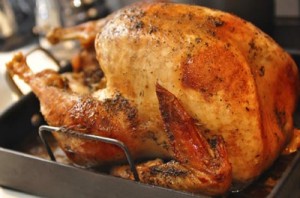
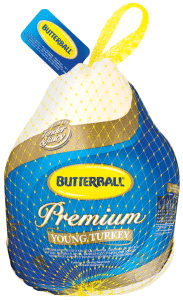
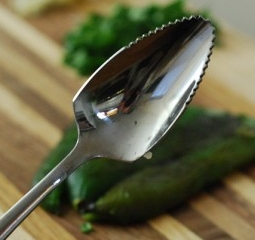
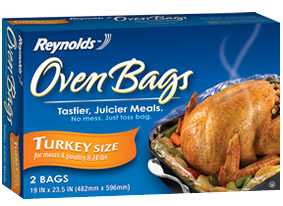
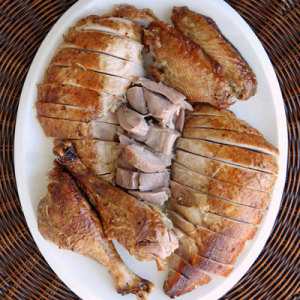
I don’t understand. You cover the turkey with oil and cheese? Never heard this before.
Hi Madison, sorry for the confusion! Not cheese, cheesecloth. It’s a thin piece of fabric used for cooking. You soak the cheesecloth in oil, then drape it over the turkey. Hope that makes more sense!
What a great overview of how to cook a turkey. I honestly would have had no idea!
So glad you found it helpful.
I’m sorry for laughing… I don’t even know how to turn on an oven, but I do know what cheesecloth is. That was my best laugh of the day 🙂 thank you oil and cheese lady for the giggle 😉
Honestly, I was a bit surprised…
Thanks for the tips